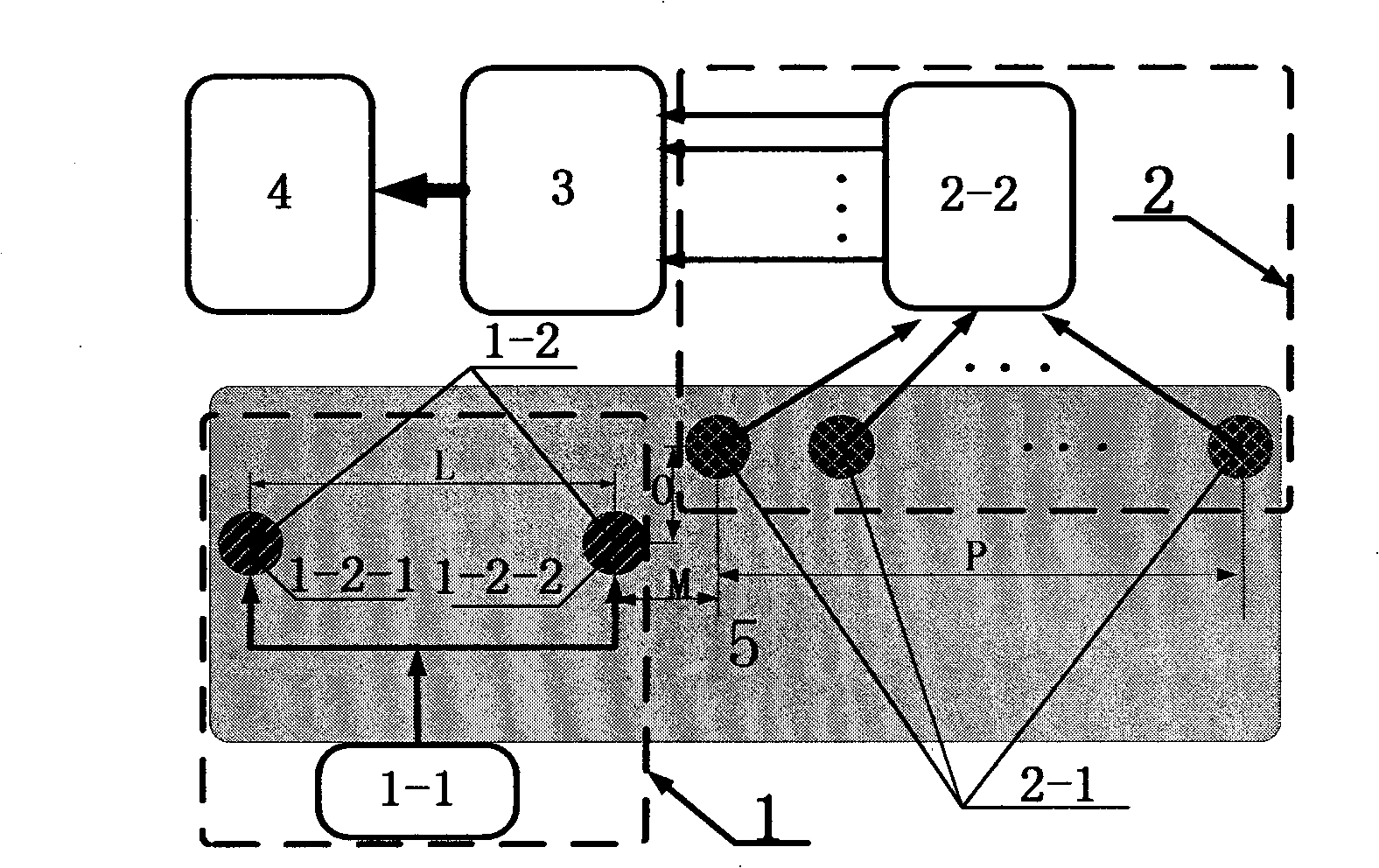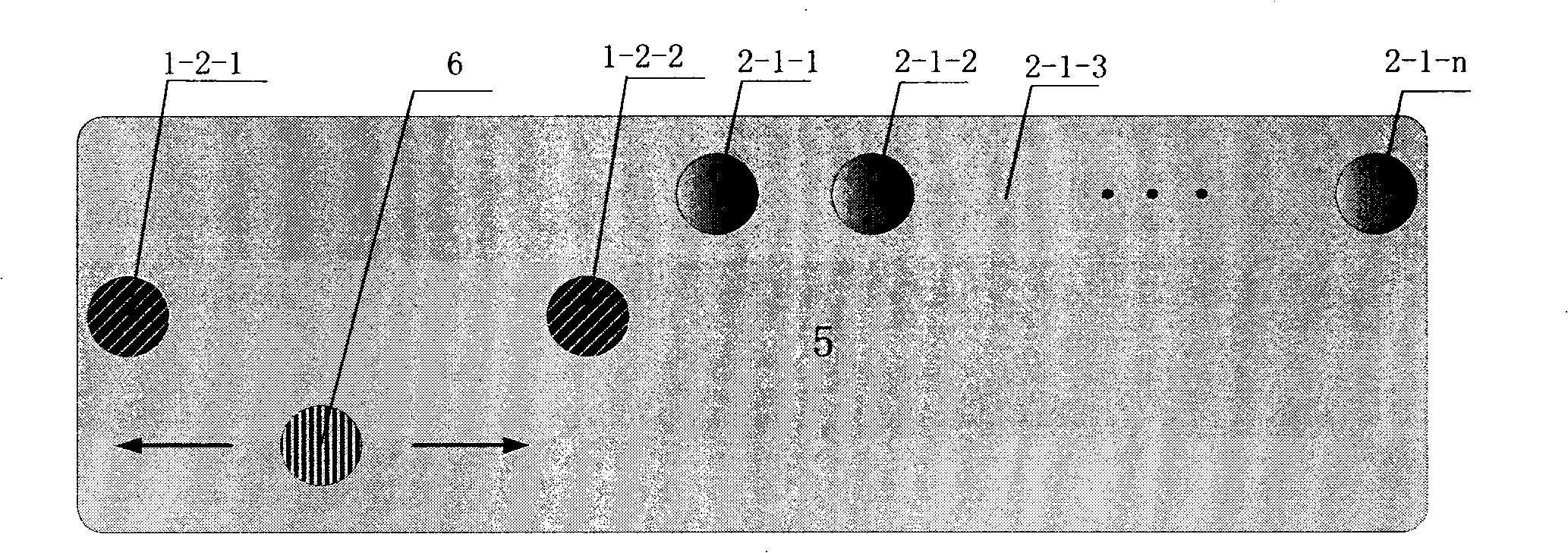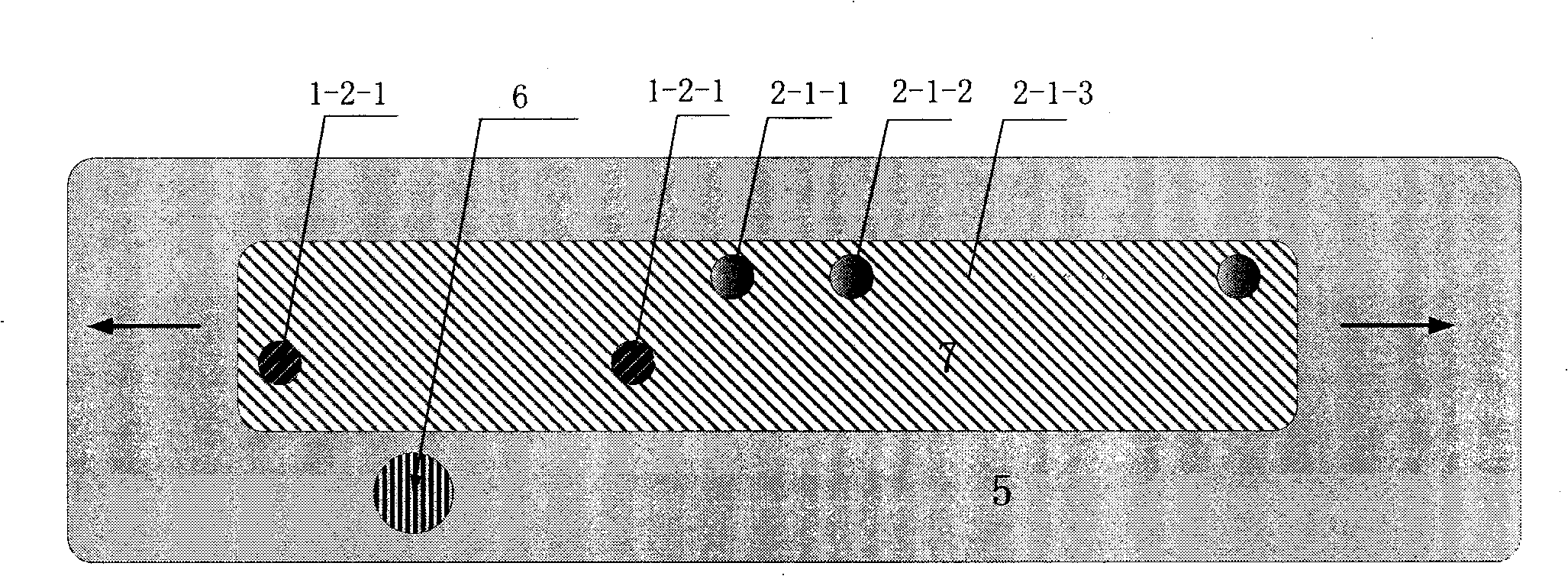Underwater object locating device
A positioning device and underwater target technology, applied in the field of underwater navigation and positioning, can solve the problems of high cost of acoustic imaging sonar, high system cost, and unsuitability for underwater robots to miniaturize and work underwater for a long time, achieving simple hardware, Effects Overcoming Mechanistic Limitations
- Summary
- Abstract
- Description
- Claims
- Application Information
AI Technical Summary
Problems solved by technology
Method used
Image
Examples
Embodiment 1
[0020] Such as figure 2 As shown, in the conductive liquid medium (5), the positions of the transmitting electrode (1-2) and the receiving electrode (2-1) are fixed. The target body (6) moves relatively in the medium in the liquid medium (5). The signal generator (1-1) generates a sinusoidal or square wave signal as an excitation source, which is input to the emitting electrode (1-2). A regularly changing electric field is formed in the medium. The current received by the receiving electrode (2-1) will change accordingly. This signal is transformed by the receiving circuit (2-2), amplified and converted into an analog voltage signal, and finally converted into a digital signal by the data sampler (3) to enter the data The processor (4) performs processing. When there is a target in the electric field, the amplitude of the current change of the receiving electrode will change, and the amplitude of the current change will change regularly with the relative position of the ta...
Embodiment 2
[0022] Such as image 3 As shown, the position of the target body (6) in the liquid medium (5) is fixed. In the liquid medium (5), the transmitting electrode (1-2) and the receiving electrode (2-1) are fixed on a fixed plate 7. The fixed plate (7) moves relatively in the medium. The sine or square wave signal generated by the signal generator is used as an excitation source and input to the emitting electrode (1-2). A regularly changing electric field is formed in the medium. The current received by the receiving electrode (2-1) will change accordingly. This signal is transformed by the receiving circuit (2-2), amplified and converted into an analog voltage signal, and finally converted into a digital signal by the data sampler (3) to enter the data The processor (4) performs processing. When there is a target in the electric field, the amplitude of the current change of the receiving electrode will change, and the amplitude of the current change will change regularly with...
PUM
 Login to View More
Login to View More Abstract
Description
Claims
Application Information
 Login to View More
Login to View More - R&D
- Intellectual Property
- Life Sciences
- Materials
- Tech Scout
- Unparalleled Data Quality
- Higher Quality Content
- 60% Fewer Hallucinations
Browse by: Latest US Patents, China's latest patents, Technical Efficacy Thesaurus, Application Domain, Technology Topic, Popular Technical Reports.
© 2025 PatSnap. All rights reserved.Legal|Privacy policy|Modern Slavery Act Transparency Statement|Sitemap|About US| Contact US: help@patsnap.com



